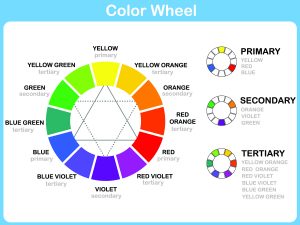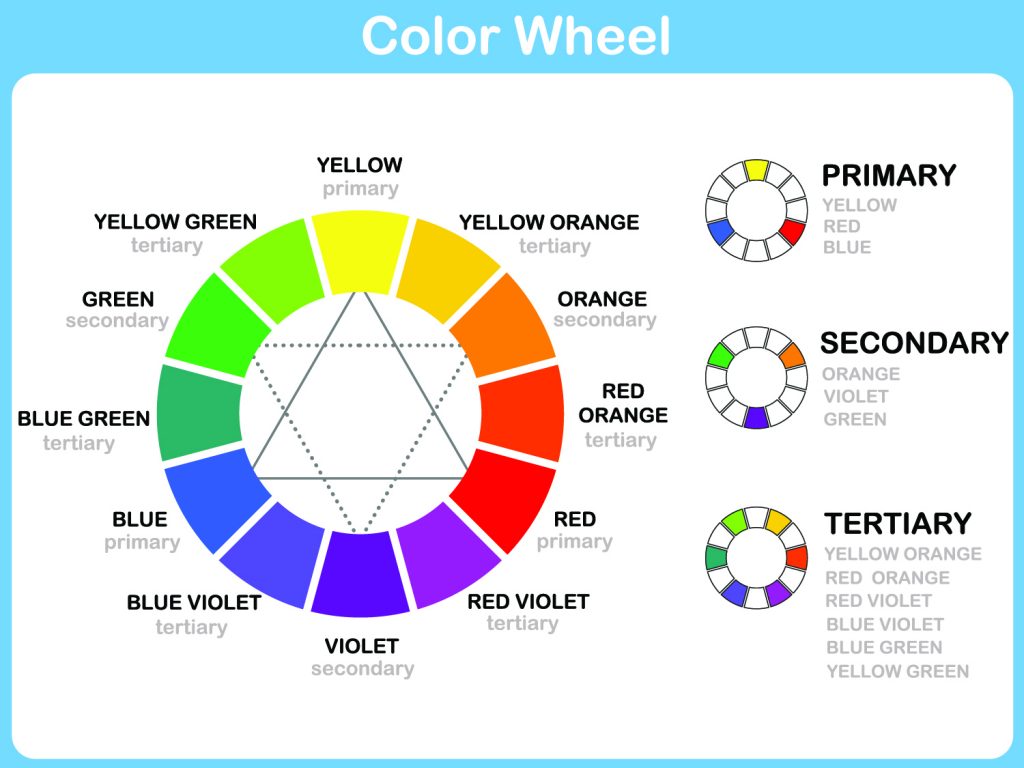Understanding color mixing is key when painting. Knowing the basics will get you started, and a little practice will progress you into achieving the shades, hues and tints that you are aiming for. Color theory can be complicated. Here I will break down the basics to simplify it for you. Typically, if you have the three primary colors (red, yellow, blue) and some white, you can make any color you need. It is important, also, to understand the proportions of colors to mix to achieve particular shades.
The Basics
It is likely that you learned in elementary school the three primary colors (red, yellow and blue). Primary colors cannot be created from any other color, which is why they are called primary.
You may recall that mixing any two of the three primary colors creates a secondary color (orange, green, violet).
Finally, mixing a primary and its adjacent secondary color creates a tertiary color (yellow-orange, red-orange, red-violet, blue-violet, blue-green, yellow-green)

The Good Stuff
Now that we have given you a refresher in the basics, let’s get on to making the kind of shades that you may be struggling to achieve in your own color mixing and painting.

